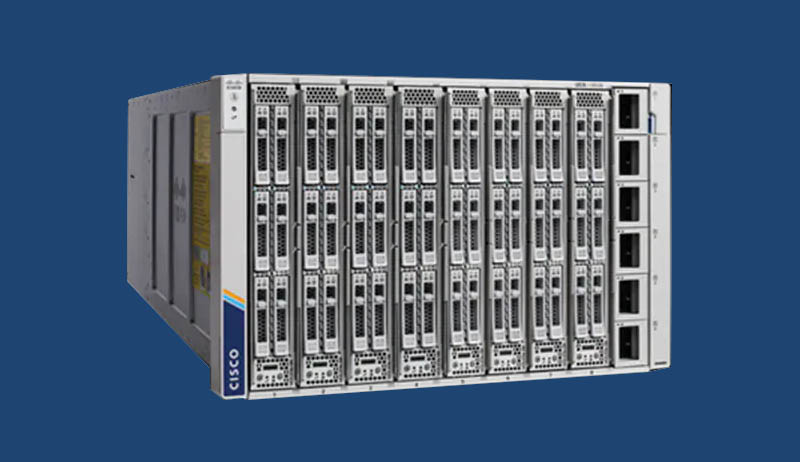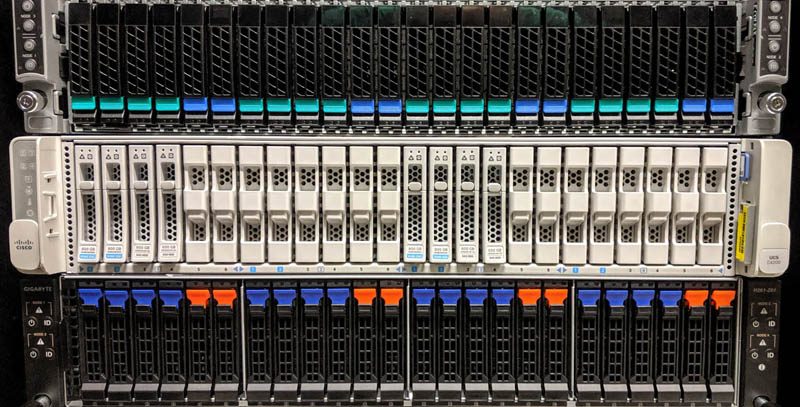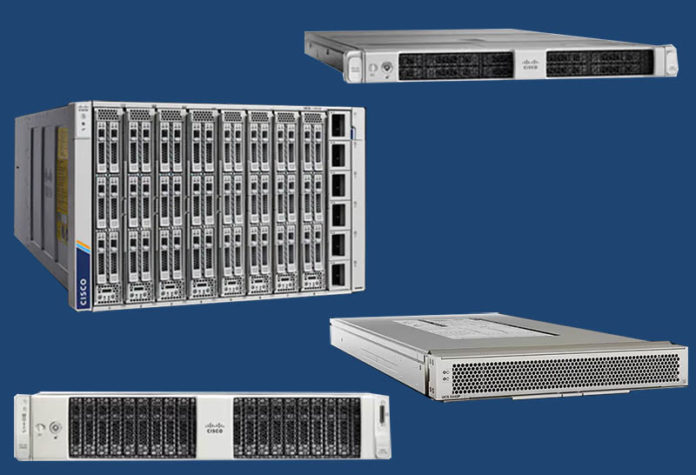As part of the 4th Gen Intel Xeon Scalable “Sapphire Rapids” launch, Cisco UCS M7 servers are out with the new chips. Cisco’s UCS portfolio only includes a few new models, but those appear to hit many of the mainstream segments. Cisco also has an interesting solution for blade GPUs.
Cisco UCS M7 Servers with 4th Gen Intel Xeon Sapphire Rapids Launched
The 1U Cisco UCS C220 M7 is the company’s mainstream server. This server offers dual processors and a range of storage and I/O options. The server has a flexible slot that can handle an OCP NIC 3.0 or a Cisco VIC. The Cisco VIC is still very relevant in this generation as we are still waiting for the software side to make similar (and greater) capabilities available to other servers via DPUs. If you want to see the evolution of DPUs, check out our hands-on with the Intel Big Spring Canyon card that Baidu uses, our BlueField-2 ZFS hands-on fun, or even our recent Marvell Octeon 10 piece.

For more I/O, the Cisco UCS C240 M7 offers more storage and more PCIe expansion with the increased rack height. In the Sapphire Rapdis generation, we are seeing TDPs and server power consumption rise to the point that many organizations that previously focused on density 1U offerings are switching to 2U to get more efficient power and cooling. A modern top-end server, without accelerators, can use 1kW, so common 208V 30A racks can only house five server nodes without in-rack networking. That makes 1U, and the increased power consumption from smaller fans, less appealing in this generation.

Cisco also has a number of blade systems that can be used in the 7U Cisco UCS X9508 platform (Cisco’s answer to something like the Dell PowerEdge MX.) The Cisco UCS X210c M7 is the company’s 2-socket Sapphire Rapids server. For four-socket platforms, the Cisco UCS X410c M7 is the blade option.

One of the coolest features of the blades is that they can utilize the Cisco UCS X440p PCIe Node.

This is a PCIe expansion chassis that we have seen from other vendors (NVIDIA even used to sell these many generations before DGX systems.) This allows Cisco to have its blade servers access GPUs like the NVIDIA A100 and Intel Flex series in an external chassis with its own power and cooling.
Final Words
The last time we reviewed a Cisco UCS server, it was in our Cisco UCS C4200 review. That was a very nice machine, although we are unsure why Cisco is not offering the AMD EPYC 9004 Genoa to its customers, given those parts offer top-end per socket and per-core performance (sans accelerators) in this generation.

Still, Cisco UCS servers are designed very well and are focused on integrating with Cisco’s fabric. We just wish there was a broader portfolio from the company.
If you want a quick overview of the new features of Intel’s platform, we have that too. STH did a quick video for Intel and Supermicro showing the new features of the Sapphire Rapids platforms outside of Intel’s headquarters for this launch:
If you want to learn more about the new 4th Gen Intel Xeon Scalable Sapphire Rapids we have this video:





Given Cisco’s emphasis on fabric integration are there any aspects of this system that are either synergistic with or slightly awkward potential substitutes for some of the networking-focused acceleration capabilities that Intel has been pushing as hot features for Sapphire rapids?
DSA/QAT/DLB seem like things that an outfit like Cisco, with their own emphasis on acceleration of network related functions, but coming from the network side, would potentially be of two minds about: either really jump on and try to use those to extend some of the capabilities that are very fast thanks to dedicated hardware on the switch side to the nodes; or try to deemphasize because they look unnervingly close to being the node’s best chance at doing, at acceptable speed, things that were previously only possible with expensive switches.